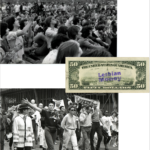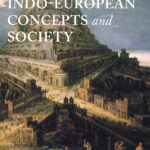Treacherous Objects
Anticipating this week on tourism/authenticity, I thought people might be interested in the Museum of Art Fakes ( https://www.faelschermuseum.com ) – although unfortunately it’s in Vienna. If you’ve ever painted yourself, then you know intimately just how impressive art forgery is – it’d be like learning someone else’s handwriting. It’s hard to say who shows greater skill . . .
In F for Fake, ( https://www.youtube.com/watch?v=gIVgUjj6RxU ) this is exactly the question pursued by Orson Welles in his ‘documentary’ about prolific forger Elmyr de Hory. Whilst investigating the duplicity of the film’s protagonist, Welles also toys with the veracity of the film itself. These include a suite of editorial tricks which juggle stories, geographies, time, people, and conversations that mislead the audience – an interesting spin on our discussion of montage following The Possibility of Spirits.
In terms of authenticity, I think a more provoking example is the ambiguity of authorship which has come to cloud some of the world’s most valuable paintings. I find the ‘attribution’ column of this list fascinating in this regard – how much could a merely “generally accepted” da Vinci possibly be worth? https://en.wikipedia.org/wiki/List_of_works_by_Leonardo_da_Vinci#Major_extant_works There’s something similar to be said about the curiosity of forged forgeries, fake fakes, simulacra with no original http://www.elmyr.net/fake-elmyrs.html
As Rene Magritte reminds us in the thumbnail, it’s not a pipe – it’s a painting of a pipe, echoing the old saying “the map is not the territory”. While returning to the materiality of objects can be illuminating, to do so here (and perhaps in other cases too) would miss the point entirely – the thing that makes this class of objects fun to think about is their radical symbolism, the floaty disjointedness of values from the materials themselves. Although we have discussed problems with Carrier’s ‘ideology of the perfect gift’, I think he’s spot on to point out the extraordinary similitude of much of the stuff around us, how the biographies of whole classes of objects (whether lighters, lizards, laptops, keep cups, etc.) can never be more than speculation. Sometimes, things simply aren’t that interesting. At least forgery offers us a less boring form of duplication.
~JOSEPH
Contributed by JosephUhlar on 08/02/2020






